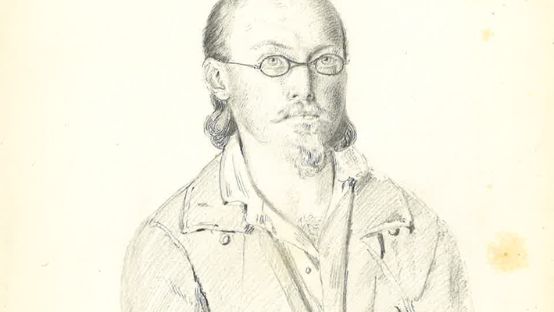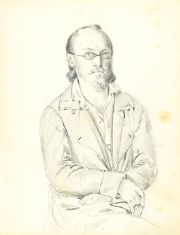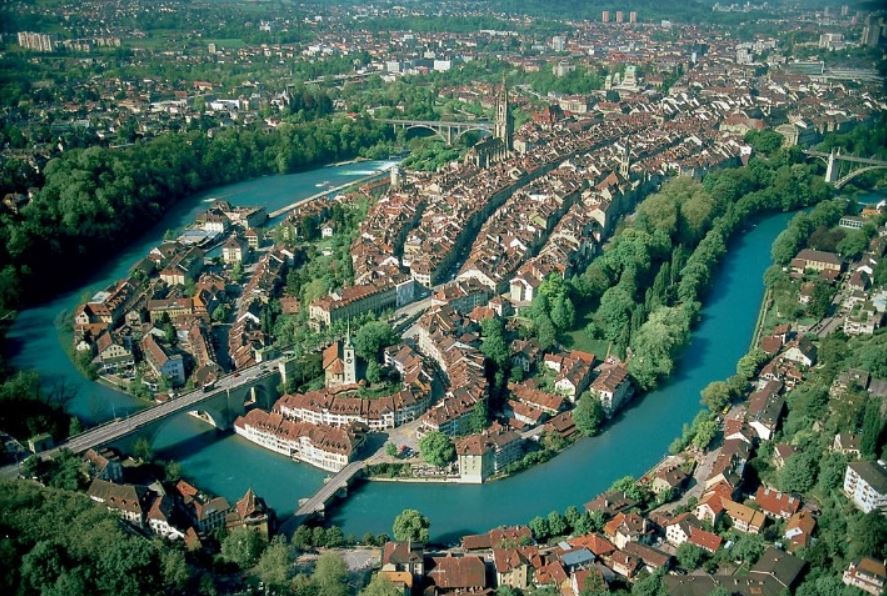Raff portrait from 1850 discovered
The Lachner Raff Archive has acquired a sketchbook with original artist's drawings in Berlin. Among them are pencil drawings showing the then 28-year-old composer and his father-in-law Eduard Genast.

The Raff Archive in Lachen was recently able to make a rare acquisition. Thanks to good connections, it acquired a book from 1850 with eight original pencil drawings by the Hungarian painter and sculptor Carl Dosnyai, who lived in Weimar from 1848-1850, from the Bassenge auction house in Berlin. Joachim Raff is among those portrayed. The drawing is the first known portrait of the then 28-year-old composer from Lachen.
Franz Liszt, Raff's mentor of many years, was known for his generous support of young artists. Out of gratitude, Dosnyai dedicated "To his noble benefactor Mr. Doctor Franz Liszt" these portrait drawings. All eight full-page depictions show important artists of the Weimar court theater and the court chapel. They were also good acquaintances of Franz Liszt, who led the "New Weimar artists' colony" at the time.
Of particular significance for the Joachim Raff Society is the fact that it also includes a picture of Raff's father-in-law, the director and court actor Eduard Genast (1797-1866), who served at the court of Duke Alexander under Johann Wolfgang von Goethe. The other people portrayed were also known or even friends of Joachim Raff. For example, the rising star among the violinists Joseph Joachim, who was later also a close friend of Johannes Brahms. Similar to Joachim Raff's portrait, this drawing is also considered to be the first known work of art by this later successful violinist. The famous baritone of the time Hans Feodor von Milde (1821-1899), the cellist and composer Bernhard Cossmann (1822-1910) and the pianist, organist and composer Alexander Winterberg (1834-1914) are also among those portrayed. Bernhard Cossmann launched various chamber music works by Raff in Weimar during the Silver Age in the 1850s.
The fact that the Raff Archive now has the earliest known portrait painting of the then 28-year-old Joachim Raff in its collections can be considered a minor sensation. Raff avoided posing for painters or photographers as much as possible. That is why there are unfortunately only a few photographs and pictures of him. And those that do exist show him again and again with the same motif, either as a drawing, photograph, engraving or other printing process from his most successful creative period, the 1870s.
-

Carl Dosnyai (1813-1850), Portrait of Joachim Raff, pencil drawing from the sketchbook, 22.5 x 18 cm
As the illustration shows, the young Raff appears in 1850, when he had just begun his assistantship with Liszt in Weimar, surprisingly as an extremely relaxed, self-confident, almost dandyish young artist with an open jacket and shirt and a cigar in his hand. Only five years earlier, Raff had left Rapperswil as a young teacher and thus left Switzerland. In all later depictions, Raff is seen as a serious, sedate, stern, perhaps even worried and thoughtful older gentleman.
Raff, who was always regarded as a scholar, was the only one of those portrayed to write a personal and highly interesting dedication to Franz Liszt on October 29, 1850: "If self-irony reveals a person's sense of humor, it will have to be said of me that I have not rejected its bitterest demands".
The original drawings, including a dedication by Joachim Raff to Franz Liszt, can now be viewed in the Raff Archive during the usual opening hours on Saturdays or by appointment.








